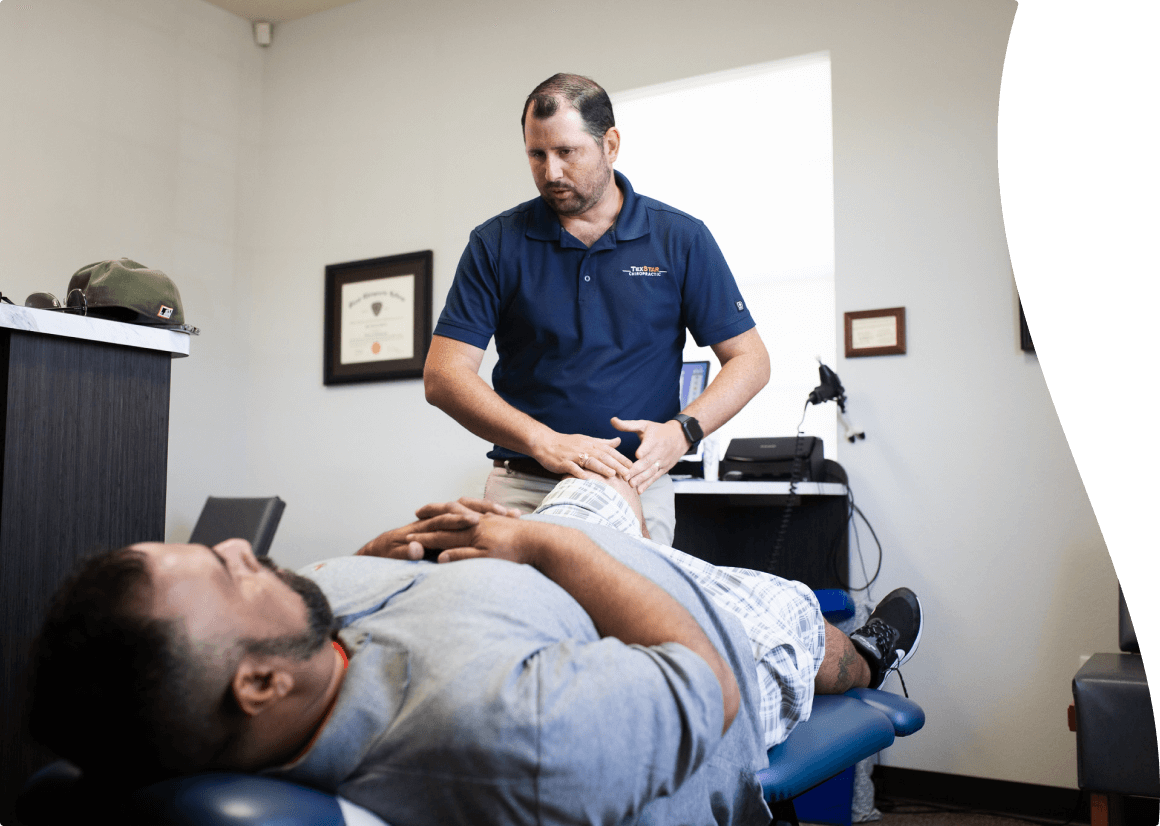THE TEXSTAR APPROACH
Knee Pain

What Causes Knee Pain?
Chronic knee pain in the U.S. is incredibly common and incredibly misunderstood. The standard medical approach is to identify the damaged tissue and either, inject the damaged tissue with steroids, Inject the joint with a lubricating gell or shave down the rough surfaces of an already worn down meniscus.
While these approaches provide temporary relief they ignore the factors that lead to the knee damage in the first place. This approach generally ends in the need for a knee replacement surgery.
At TexStar we treat knee pain differently.
Common causes of knee pain include:
Acute Injuries
These are the types of trauma that you can get from sports and work accidents and happen all at once such as torn muscles and ligaments, fractured bones, and damaged cartilage.
These are the types of injuries that sometimes do require surgical correction if serious enough.
Wear and Tear
When we have minor traumas to our knee joints throughout our everyday lives our bodies will try to compensate by changing how we move and walk to allow the damage to heal.
Over time these small changes to how our muscles are firing can create imbalances that cause uneven wear patterns to the joint itself.
This chronic imbalance and damaged tissue can create painful irritation to in and around the knee joint called osteoarthritis.
In addition to these conditions, when pain occurs in the knee, all components need to be examined including the lower back, pelvis, hip, ankle and feet. Each of these have a direct influence on the knee, and if not working properly, can put stress on the knee joint.
The TexStar Solution
At TexStar, we’re not satisfied with cookie-cutter methods to mask your symptoms. We start with a thorough exam that evaluates the joints, muscles, and nerves around the knees as well as the hips, ankles, and low back. This gives us a much clearer picture of how to correct the movement patterns and muscle imbalances that cause most of the actual pain symptoms around a damaged knee.
Using a whole body approach combined with advanced training and specialized equipment we see improvement in at least 90% of our knee patients within two visits. Even those that have been diagnosed as bone on bone arthritis.
Some of our treatments may include:
- Cold Laser Therapy: We use this high powered cold laser to decrease the inflammation in the joint and speed up the healing process
- Joint Manipulation: By mobilizing the joints of the knee, ankle, foot, hip, and low back we can start to restore normal movement patterns
- Trigenics: Using this strengthening and lengthening soft tissue work procedure we can instantly reprogram the way the brain fires the leg muscles that move the knee.
- Core Strengthening and Physical Rehabilitation: By utilizing whole body vibration plates and machine assisted stretching we are able to stabilize these restored movement patterns to get you long lasting improvement.
- Knee on Trac© This treatment uses a traction therapy system, designed to reduce pain, increase joint function, and promote tissue healing in your knees. This treatment is currently only available in our knee specialty locations in Bee Cave and Buda.
Reviews and Testimonials from our Clients
True stories from pain-free patients